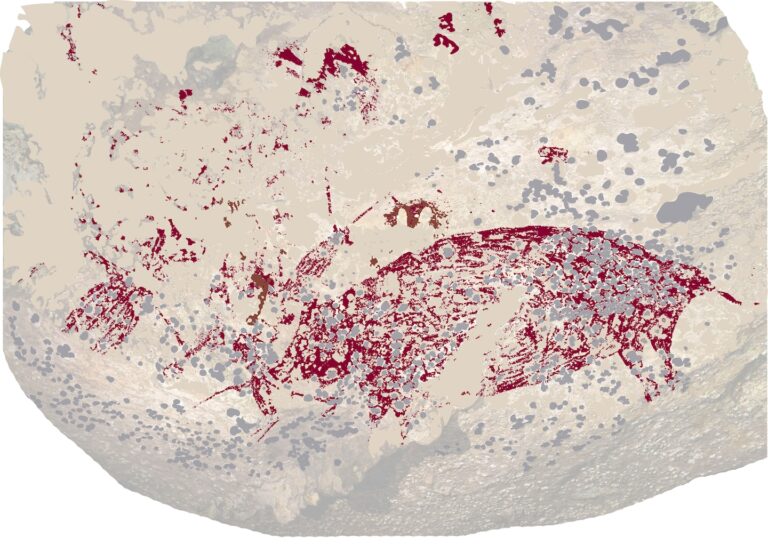This is evidence that humans were capable of storytelling in the distant past, said Adam Brumm, professor of archaeology at the Australian Research Centre for Human Evolution at Griffith University and author of the study, published Thursday in Nature.
“Storytelling is an incredibly important part of human evolution, and perhaps even helps explain our success as a species,” he said at a briefing on the research. “But finding evidence of this presence in art, especially in very ancient rock art, is exceptionally rare.”
“We don’t know exactly what’s happening in this scene,” he added of the cave painting. “But it clearly tells some kind of story that involves the interaction between these three humanoid figures and the pig.”
The people of Sulawesi around 50,000 B.C. were “crazy” about painting pigs, which they depicted repeatedly in cave art, Brumm said. Archaeological evidence suggests they hunted the species, called the Sulawesi warty pig. The cave’s elevated position, which was inconvenient for daily living, could suggest they went there specifically to paint or to paint as part of some other special practice, he added.
“I think what we have today, from the earliest rock art discoveries in Sulawesi, is the world’s earliest known evidence of imaginative storytelling in the use of scenes in art,” he said.
The site is a hotbed of significant rock art discoveries. Previous discoveries in Sulawesi in recent years have been dated to 40,000 to 44,000 years ago, making it the oldest rock art scene ever discovered. There are at least 300 preserved rock art and shelter sites in the region, many of which have not been closely studied.
The research team, co-led by Indonesia’s National Research and Innovation Agency and Australia’s Griffith and Southern Cross Universities, used a new dating method by analyzing the accumulated layers of calcium carbonate on the painting. They also revised the date of the 44,000-year-old work to closer to 48,000 years old.
The world’s oldest known cave paintings were made by Neanderthals, scientists say. Around 65,000 years ago, members of our doomed cousin species left handprints, lines and shapes in three caves in present-day Spain, at least 20 millennia before modern humans are thought to have arrived on the continent.
The famous cave art at Lascaux in France is dated to a maximum age of around 21,000 years.


